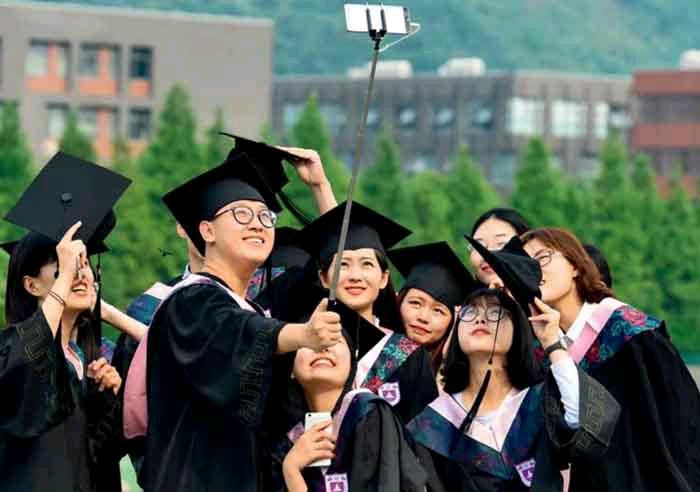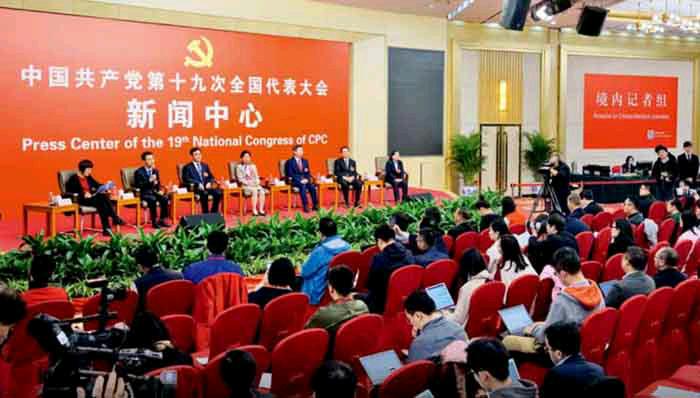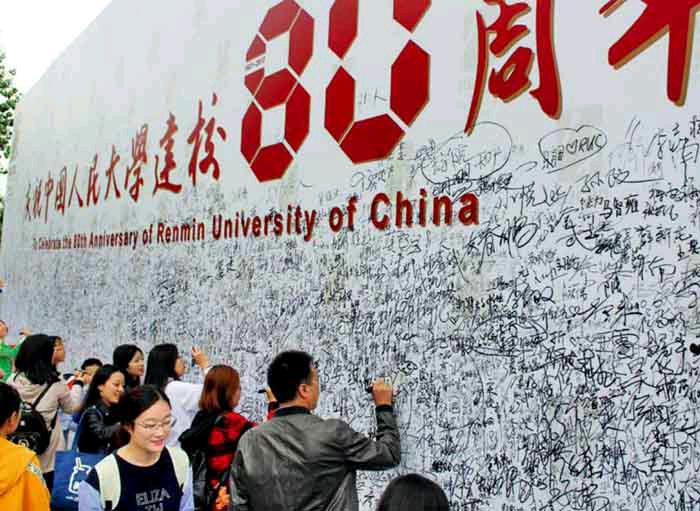Impressive Scores in Higher Education
2017-11-27byZhangXue
by+Zhang+Xue
Rankings of the worlds elite schools have always attracted major public attention. Among numerous competitors, Chinese institutions of higher learning are starting to grab international attention for their outstanding performances.
In September 2017, the British journal Times Higher Education rolled out its latest “World University Rankings,” in which Tsinghua University and Peking University were among the top 30, and a total of 13 Chinese universities made the top 200.
Phil Baty, editor-in-chief of the journal, praised Chinese universities for joining the global elite, surpassing many famous universities in Europe and America.
Increasing Investment for Educational Progress with Chinese Characteristics
On Teachers Day in 2013 and 2014, Chinese President Xi Jinping, also General Secretary of the Central Committee of the Communist Party of China (CPC), expressed expectations to“develop modern, world-class education featuring Chinese charac- teristics” to educators across the country. In May 2014, he visited Peking University, where he stressed that in “building world-class colleges and universities... they must feature Chinese characteristics.” “There is only one Harvard University, University of Oxford, Stanford University, Massachusetts Institute of Technology and University of Cambridge,” Xi elaborated. “Likewise, there is only one Peking University, Tsinghua University, Zhejiang University, Fudan University and Nanjing University in China. We should draw on the worlds best experience in running institutions of higher learning, follow established rules of education and develop more excellent colleges and universities on Chinese soil.”
With guidelines of “Chinese characteristics” and “world class”in mind, China has kindled an educational boom as it shows the world the power of its educational development model.
Such a trend could not happen without increased investment from the Chinese government.
In 2012, Chinas fiscal education expenditures exceeded 2 trillion yuan (about US$301.6 billion), accounting for over 4 percent of its GDP for the first time. In 2016, the figure reached 3.14 trillion yuan (about US$473.5 billion), exceeding 4 percent of Chinas GDP for five consecutive years. Between 2012 and 2016, Chinas education expenditure amounted to 13.5 trillion yuan (about US$2.04 trillion), surpassing the combined investment in the 60 years from 1952 through 2011.endprint
Still, enrollment in Chinese colleges and universities has been increasing. In 2016, 37 million students were enrolled, an increase of 3.738 million or 11.2 percent over 2012. China leads the world in the provision of higher education, with its college students ac- counting for 20 percent of the worlds total.
Over the past few years, the Chinese government has strengthened the top-level design of higher education to promote its sound development, upgrade the development of institutions of higher education and march towards a world power in education.
In September 2017, the Chinese government released a list for key construction of “world-class universities” and “firstclass disciplines.” With the goals of “Chinese characteristics”and “world class,” China is striving to promote many high-level universities as well as disciplinary programs to elevate them to be among the worlds best.
Achievements in Science and Technology
In August 2017, the online British journal Nature simultaneously published two papers from the same Chinese research team that were authored by Pan Jianwei, chief scientist of the countrys experimental quantum satellite program, academician from the Chinese Academy of Sciences, and professor with the University of Science and Technology of China, and a group of his colleagues.
Both papers announced “firsts.” For the first time anywhere in the world, China successfully made quantum key distribution of the quantum science satellite Mozi from the satellite to the ground and for the first time completed quantum teleportation from the ground to the satellite.
The successful launch of Mozi has laid a solid scientific and technological cornerstone for China to reinforce its leading position in the world in the development of quantum communication technology and frontier research in basic tests of quantum physics.
The Chinese governments increasing investment in intensifying scientific research in institutions of higher learning has resulted in enthusiastic participation and scientific and technological innovation on campuses.
Earlier in June, a scientific expedition team led by Chief Scientist Xu Jishang returned to Qingdao with promising results after a mission to investigate undersea sediment and perform a benthic survey in the western Pacific, a special study of the “interaction between global warming and ocean atmosphere.”endprint

The researchers spent 58 days on a 15,000-kilometer maritime journey, with the maximum operating depth reaching 8,000 meters down into the ocean, setting a record for the Haida ship in terms of distance, duration and depth of operation and proving the capabilities of deep-sea scientific investigation conducted by the Ocean University of China in Qingdao, Shandong Province.
Over the past five years, the emergence of many globally important scientific research results coming out of China has testified to the rise of scientific and technological research teams led by Chinese colleges and universities, which have become the most important incubators of talent and innovation for Chinas strategy of innovative impetus.
The Chinese government has realized that providing innovative achievements and fostering new economic development momentum require improved education.
Over the last five years, Chinas total funding of scientific and technological research in colleges and universities has topped 653.1 billion yuan (about US$98.5 billion). These institutions of higher learning have undertaken more than 80 percent of the projects supported by the National Natural Science Foundation of China and a number of scientific and technological projects of national importance that have brought remarkable achievements, of which the more cutting-edge ones have caused sensations in the international scientific community.
Data show that between 2012 and 2016, the count of Chinese mainland colleges and universities ranking among the worlds top 500 grew from 31 to 98.
Attracting More International Students
The growing fame of Chinese colleges and universities has increased their attractiveness around the world. China has become one of the top choices for many international students.
Since the 18th CPC National Congress in 2012, China has welcomed more and more students from other parts of the world. Statistics from the Ministry of Education show that in 2016, international students studying in China surpassed 440,000, an increase of 35 percent over 2012. China has become a top Asian destination for international students, a development which has in turn testified to the countrys economic and comprehensive strength.
Compared to earlier groups who came to study the Chinese language, more students now come for academic courses, accounting for over half of the total enrollment.endprint
The Chinese government has constantly increased its scholar- ship allotment to further encourage international students to study in China. In 2016, for instance, 49,022 students from 183 countries enjoyed such scholarships, 11 percent of the total, an increase of 70 percent over 2012. The number of countries and regions supplying Chinas international students hit 205, a record high. The 10 biggest suppliers of Chinas international students are South Korea, the United States, Thailand, Pakistan, India, Russia, Indonesia, Kazakhstan, Japan, and Vietnam, in that order.
The implementation of the Belt and Road Initiative worldwide has drawn even more students from countries along the routes. The Chinese Ministry of Education has set up a scholarship program in the name of the Silk Road, offering a total of 3,000 annual scholarships to freshmen from countries along the routes. This is one reason behind the sharply growing number of international students in China from those countries. For example, in 2012, 9,630 Pakistani students studied in China; and by 2016, this number nearly doubled to 18,626.
As part of the policies encouraging international students, China has signed agreements with 46 countries and regions to recognize each others academic degrees and diplomas. Moreover, it has signed and promoted the implementation of the UNESCO Asia-Pacific Regional Convention on the Recognition of Qualifications in Higher Education, collaborated with the World Bank in coordinating and compiling policy recommendations on international education trends and experience and led the formulation of APECs education strategies, to name only a few.
Under the motto of “developing education with Chinese characteristics to global levels,” we expect to see more Chinese colleges and universities appear on lists of the worlds best. endprint
endprint